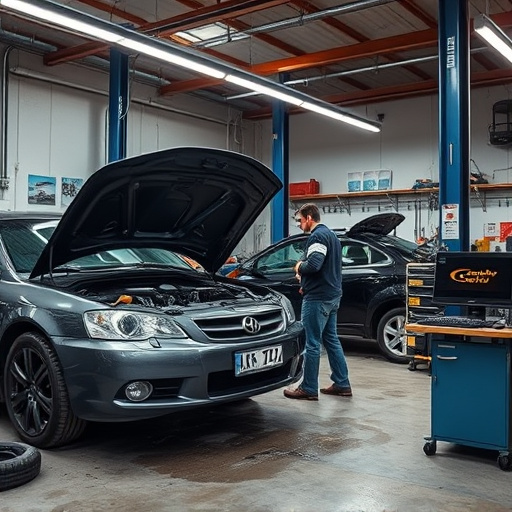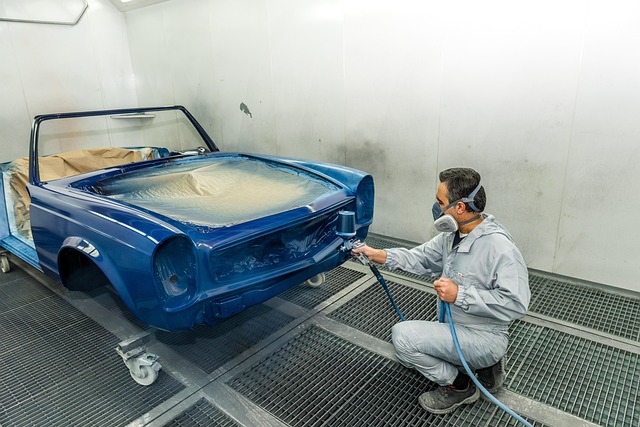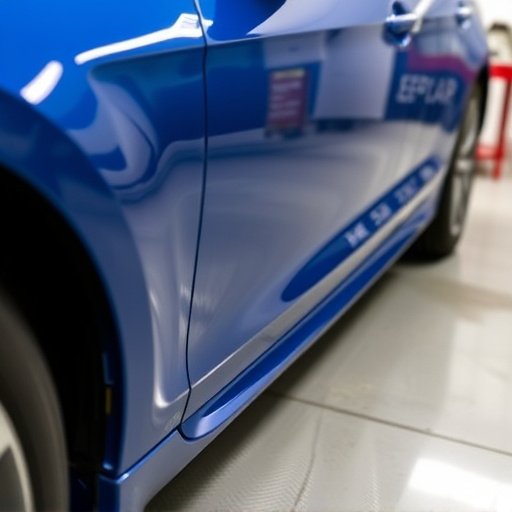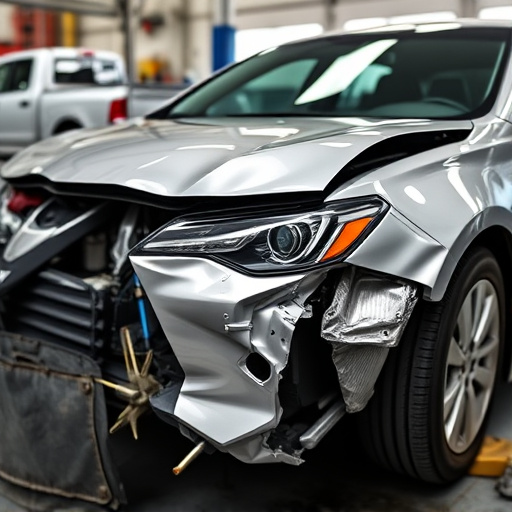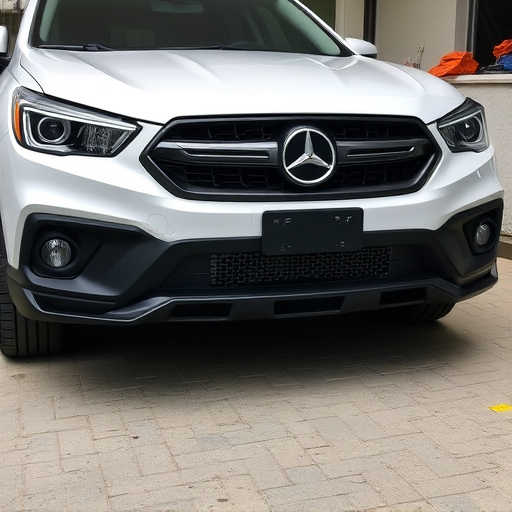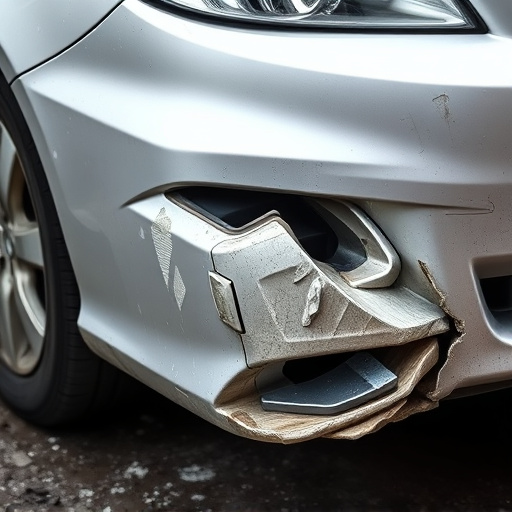Door dent repair focuses on assessing and preserving paint finish. Visually inspect for dents, use thumb pressure test for minor repairs. Professionals use air pressure guns to accurately diagnose. Home repairs require tools like dent puller, isopropyl alcohol, sandpaper, primer, car paint. Mark damage, apply heat, use puller, buff, then touch-up paint for a seamless fix.
“Discover how to swiftly and safely fix door dents without damaging your car’s paint finish. This comprehensive guide delves into identifying subtle dent damage, providing an at-home solution for a smooth restoration. Learn the essential tools and materials required, and master a step-by-step process ensuring a flawless result. Efficient door dent repair is achievable, leaving your vehicle looking as good as new. Elevate your DIY skills with these expert tips for effective and precise dent removal.”
- Assessing Door Dent Damage Without Paint Scratches
- Tools and Materials for dent repair at home
- Step-by-step Guide to Smooth Out Door Dents Safely
Assessing Door Dent Damage Without Paint Scratches
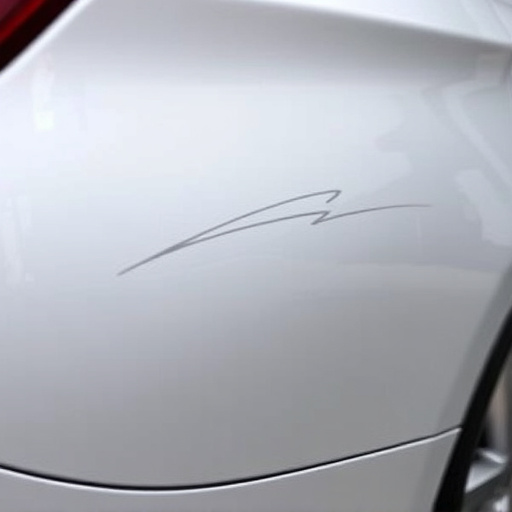
When assessing door dent damage, the goal is to identify the extent of the issue without causing further harm to the car’s paint finish. Start by examining the surface for any visible dents, dings, or creases. Gently press your thumb into the suspected area; if it depresses and returns to its original shape, it’s likely a minor dent that can be repaired easily. Avoid using excessive force, as this could mar the paint or even worse, cause hidden damage.
Automotive body shops employ specialized tools to accurately diagnose door dent repair needs. These tools allow professionals to pinpoint the exact location and depth of the dent, ensuring that only the damaged panel is treated. For instance, a Mercedes-Benz repair shop might use an air pressure gun to gently push against the dented area, revealing its true nature without leaving paint scratches or other traces of forced entry.
Tools and Materials for dent repair at home
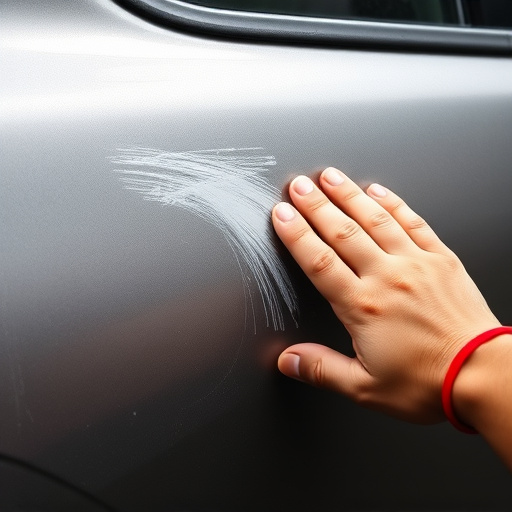
To tackle a door dent repair at home, you’ll need a few specific tools and materials. Essential items include a dent puller or extractor—these tools use air pressure to gently push out the dented area back to its original shape. Also, gather some rubber mallets for more precise adjustments, and a set of clamps to secure the panel during the repair process. For the actual work, you’ll require a suitable solvent (like isopropyl alcohol) to clean the affected area, as well as a putty knife or similar tool for applying filler or body putty. Don’t forget protective gear, like gloves and safety goggles, to ensure a safe working environment.
Additional materials that might come in handy for more complex repairs include sandpaper (for smoothing out the surface after removal of the dent), primer (to prepare the paint for touch-ups), and finally, high-quality car paint or a matching color spray can. While these last items may seem like a significant investment, they’re crucial for achieving a professional-like finish, especially in cases of mercedes benz collision repair or vehicle collision repair. Remember, proper preparation and using suitable auto painting products will ensure your door dent repair is both effective and discreet.
Step-by-step Guide to Smooth Out Door Dents Safely
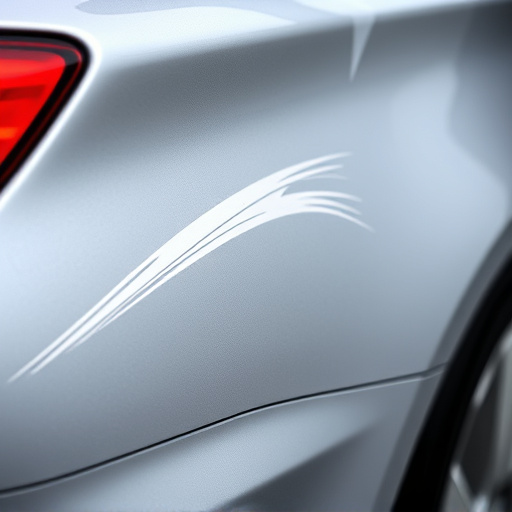
To smoothly out door dents safely without damaging the car paint finish, start by assessing the extent of the damage. Use a pen or pencil to mark the dent’s outline on the paint surface, taking note of its size and depth. Next, gather your tools: a dent puller or slider, a heat gun (optional), and a high-quality paint touch-up kit matching your vehicle’s color.
Begin by applying heat to the dented area using the heat gun if available. This softens the paint, making it easier to smooth. Carefully slide the dent puller or slider into the dent, applying gentle but firm pressure to pop it out. Work slowly and methodically along the edges of the dent to ensure a clean removal. Once the dent is removed, use the sandpaper provided in your kit to lightly buff the repaired area, ensuring the paint surface is smooth and even with the surrounding area. Finally, apply the touch-up paint, following the manufacturer’s instructions for drying and curing. This step-by-step process ensures a seamless repair that blends perfectly with your vehicle’s original finish, maintaining both aesthetics and value in your vehicle through proper auto maintenance practices.
Door dent repair can be a straightforward process, even for DIY enthusiasts, without damaging the car’s paint finish. By carefully assessing the damage, gathering the right tools and materials, and following a structured guide, you can effectively smooth out door dents at home, preserving both the vehicle’s aesthetics and value. Embrace this cost-effective solution and take control of minor dent repairs with confidence.


